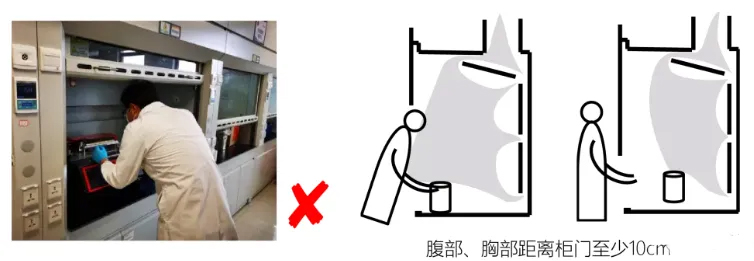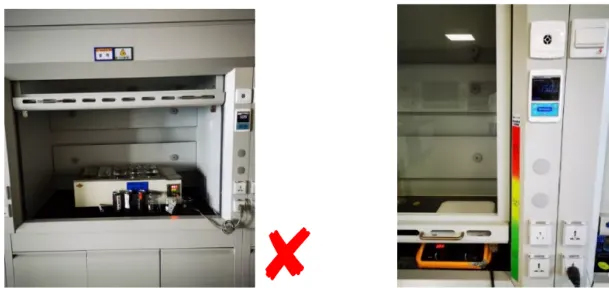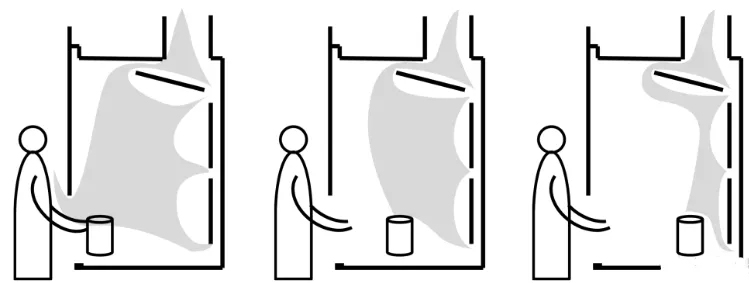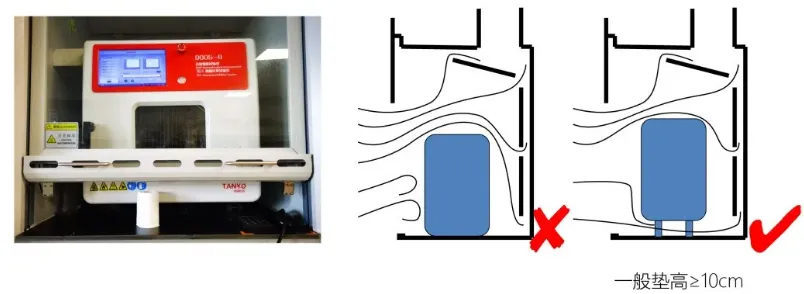In the laboratory, the way of toxic and harmful gas pollutants into the human body: respiratory tract, digestive tract, skin absorption, and inhalation is the easiest and most dangerous direct invasion route, mainly because of its rapid diffusion, 90% of industrial poisoning to inhalation as the main way.
Therefore, in order to fully ensure the safety of each experimenter, in addition to doing a good job in the laboratory ventilation system, assembling and using local exhaust system equipment, and correctly using the fume hood and ventilation system.
Doing a good job in the ventilation system is only the foundation, the operation practice of the laboratory personnel is the key!
However, laboratory personnel can generally operate a local exhaust system, and its control principle for pollutants is source control, that is, the pollutants are discharged from the source before the harmful substances have spread into the room.
So today, the editor of laboratory management and service will give you a nag on how to control the common toxic and harmful gases in the laboratory from the source, as well as the specific matters that experimenters should pay attention to when using local exhaust system equipment!
Volatile source of toxic and harmful gases in the laboratory
From the source control, it is necessary to know the common sources of toxic and harmful gas volatilization in the laboratory:
1. Experimental operation exhaust gas
The type of harmful gas emission that operators are most concerned about is the most common harmful gas when conducting experimental operations, and fume hood and universal hood exhaust protection are commonly used.
Features: unavoidable risks, uncertainties, large exhaust volume requirements, and external discharge.
2. The instrument discharges exhaust gas
Such as atomic absorption instrument, gas chromatograph and other instrument operation, clear exhaust gas discharge.
Features: unavoidable, basic certainty of risk, small exhaust volume requirements, and external discharge.
3. Reagent exhaust gas
When the reagent is stored, moved, poured and dispensed, it is accompanied by the vaporization and volatilization of the reagent.
Features: Partial avoidable, basic certainty of risk, small exhaust volume requirements, and external discharge.
4. Other exhaust gases
For emergencies such as overflow, leakage, and fire that occur during the processing, collection, and storage of laboratory waste, corresponding waste emergency plans shall be formulated, and regular drills and training shall be conducted.
In order for the fume hood to provide optimal protection, the correct operation of the occupants is an important factor. Correct operation and working methods will greatly reduce the possibility of pollutant leakage and prolong the service life of ventilation.
Proper use of fume hoods
1. Check before operation
The operator can start using the fume hood after activating the rooftop fan system, and should review the fume hood before using it:
1.1 Whether the power switches are all in the ON position.
1.2. Whether the fluorescent light switch is turned on.
1.3. Whether the fume hood is in the exhaust state.
When all the test results are in order, the fume hood can be operated.
2. the correct operation mode of the fume hood
2.1 The fully open state of the glass window is only allowed to appear when assembling and debugging internal instruments and equipment or cleaning the space in the cabinet, which is the "debugging state".
2.2 Adjust the glass window to open to the user's elbow (half-open), so that the operator's hand reaches into the cabinet to operate the experiment, and the chest above is protected by the glass window safety tempered glass, which is the "normal operation state".
2.3. Adjust the door to open to the lowest opening, and the operator leaves, so that the experimental program in the cabinet reacts or pauses the experiment by itself, which is the "standby state".
2.4. Experimenters should avoid sticking their heads into the adjustment door during the fume hood experiment to avoid danger.

2.5. Avoid placing too many non-essential items and equipment in the fume hood, so as not to interfere with the normal flow of air and cause disturbance (turbulence).
Generally, try not to place items within 15cm of the left and right side walls and cabinet doors, because these places are very easy to cause vortex.
2.6. Do not pull the door of the fume hood too high during and after the experiment

Cabinet doors are positioned too high to reduce the rate of contaminant capture, increase leakage rates, expose people to their faces when operating, and increase energy consumption.

As shown in the figure, the airflow inlet inside the fume hood is generally at the innermost and top sides, so the closer the contaminant is to the inside, the higher the capture rate of the fume hood. The experimenter should be at least 20cm in the fume hood when operating the test that produces smoke or emits gas.
2.7. Before finishing the work and leaving the fume hood, the operator should turn off the power supply of the equipment in the fume hood, turn off all water, electricity and gas switches, and reduce the adjustment door to the lowest position before leaving.
2.8. Although the fume hood is made of polymer corrosion-resistant materials, proper cleaning and maintenance is necessary to prolong the service life. If there are reagents and drugs splashed during ordinary use, they should be wiped and removed immediately, and the inside should be wiped clean with clean water before stopping work and leaving every day, and the deflector should be removed and cleaned at least once every three months.
2.9. The cabinet under the fume hood is equipped with a power control box, so it is strictly forbidden to place any corrosive substances, and the power control box cannot be blocked to avoid danger.
2.10. Each fume hood has a circuit protection system (dual protection of thermal relay + AC contactor), and a circuit breaker (NFB) for the total power supply (with leakage protection) is set up to control and protect the fan, damper, lamps and sockets. The power socket only provides 10A/220V specifications, and when the total power consumption of the equipment exceeds 10A, it needs to be designed separately.
3. The correct placement of equipment and materials
When the operator stands in front of the fume hood, it will cause a vortex, and if the items in front of the operator are placed in the wrong position, it will lead to the aggravation of this counterflow and turbulence.
Here are a few suggestions:
3.1. The equipment should be placed as deep inside the fume hood as possible and should be at least 15 to 20 cm away from the adjustment door.
3.2. If it sticks out of the adjustment door due to the equipment being too long, or is placed in a position that is sufficient to affect the opening or closing of the adjustment door.
3.3. When the height of the equipment is more than 10 cm, there needs to be an airflow channel under the equipment, and the equipment can be raised with stainless steel brackets, and the hollow or perforated brackets can reduce the interference of the airflow form.
3.4. Avoid putting too much equipment and instruments in the fume hood, and the total area of equipment or other equipment in the fume hood shall not exceed 50% of the table area.
3.5. If you need to use equipment or instruments that require power supply in the fume hood, you should pay more attention to the equipment should be grounded to reduce the possibility of sparks. The power cord should be pulled out from the air intake below, and an external power socket should be connected, and the power socket should also have a complete and certified grounding facility.
3.6. There is a high heat load equipment in the cabinet, and its heat source will cause the airflow in the cabinet to change, affecting the surface wind speed under the glass window opening of the fume hood. The thermal airflow increases the surface wind velocity below the glass window opening and decreases the surface wind speed in the upper half of the opening.
3.7. Since there will be counterflow and vortex above the fume hood and behind the adjustment door, a large amount of air flow disturbance should be avoided as much as possible in these two parts.
3.8. The influence of the equipment on the airflow

As shown in the figure on the left, the large equipment placed in the fume hood has a great impact on the airflow obstruction into the fume hood, and the airflow will produce vortex back to the indoor environment on its front, and the better solution is to raise the large equipment so that the airflow around it can enter the fume hood smoothly and reduce the risk of escape.
Contact: Neil
Phone: 0086-18205509969
E-mail: zooanylab@gmail.com
Add: 118, Building 3, Tianrun City Phase II, Tianchang City, Anhui Province. China